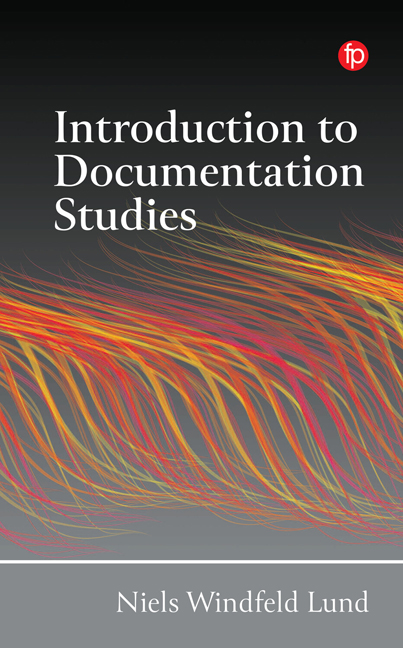 Introduction to Documentation Studies
Introduction to Documentation Studies 10 - Documentation in a Comparative Perspective
Published online by Cambridge University Press: 28 March 2024
Summary
Introduction
Following the six case studies, it is possible to compare the individual cases and see common traits in documentation across many social subsystems – across art, science, politics, and personal life. I have identified several common features.
All documents have a border: a discrete entity
To return to the quotation from Barthes, that ‘the meaning is above all a cutting-out of shapes’ (Barthes,1964/1967, 57), the resulting documents in the six case studies are all to some extent six discrete entities. They are all framed, so they can be identified as:
• a musical composition
• a short story
• a painting/print
• a dissertation
• a march
• a name/number/code.
They all have a frame or border enabling one to talk about inside and outside the entity, either in space or in time. My cases are all based in the analogue world, but even in the digital space one needs to frame a file or a search by giving it a name, a number, or a code so as to distinguish it from a search just done a second before or a few seconds later. Naming is framing. All documents have a history and a name/number/code.
All documents have a history, a name, and are part of a document complex
All documents are born at a certain time and place and have a history through the documentation processes which created them. Even in the cases where you cannot determine the time and place of the creation of the document, there is a specific time and place for the document.
To be able to identify a document it is necessary to assign a name – not necessarily a unique name, but a verbal expression labeling the document. When the mother hears her child scream, she uses the word ‘scream’ as an identifier of the scream as a document resulting from the child’s complementary documentation, information, and communication process. The child informs and communicates to their parents by using their voice. A document can also be a set of numbers or a code, but it disappears as a document if it is not assigned a name, number, or code.
The requiem score is named ‘Requiem’, because it was commissioned as a requiem and meant to be used at a Requiem Mass in the Catholic Church.
Information
- Type
- Chapter
- Information
- Introduction to Documentation StudiesComplementary Studies of Documentation, Communication and Information, pp. 129 - 144Publisher: FacetPrint publication year: 2024